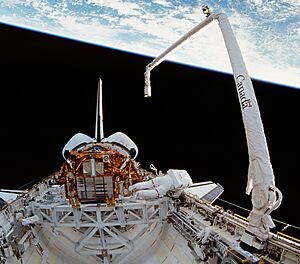Canadian Space Agency facts for kids
| Agence spatiale canadienne (French) | |
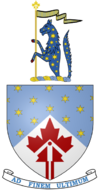
CSA coat of arms
|
|
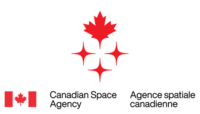
CSA logo
|
|
| Agency overview | |
|---|---|
| Formed | March 1, 1989 |
| Jurisdiction | Government of Canada |
| Headquarters | John H. Chapman Space Centre, Longueuil, Quebec 45°31′21″N 73°23′45″W / 45.52239°N 73.39582°W |
| Employees | 948 |
| Annual budget | |
| Minister responsible |
|
| Agency executives |
|
The Canadian Space Agency (CSA) is Canada's national space agency. It was created in 1990 by the Canadian Space Agency Act.
The current president is Lisa Campbell. She started this job on September 3, 2020. The agency reports to the Minister of Innovation, Science and Industry.
The CSA's main office is at the John H. Chapman Space Centre in Longueuil, Quebec. They also have offices in Ottawa, Ontario. Plus, there are small offices in Houston, Washington, and Paris to work with other countries.
History of Canada in Space
Canada's journey into space began after World War II. From 1945 to 1960, Canada worked on small rockets and satellites. They developed the Black Brant rocket. Scientists also studied how to meet up in orbit and re-enter Earth's atmosphere.
In 1957, Canadian scientists started a project called S-27. This project led to Canada's first satellite, Alouette 1.
Alouette 1: A Space Pioneer
When Alouette 1 launched in September 1962, Canada became the third country to send a satellite into space. At that time, Canada only had rockets that could reach the upper atmosphere. So, NASA (the American space agency) launched Alouette 1 from Vandenberg Air Force Base in Lompoc, California.
Alouette 1 was very well-built. It worked for ten years, much longer than expected. This success led to more studies of the ionosphere with the ISIS satellite program. This was a joint project between Canada and the U.S.
In 1972, Canada launched Anik A-1. This made Canada the first country to have its own geostationary communication satellite network. Geostationary satellites stay in the same spot above Earth.
Forming the CSA
All these space activities in the 1980s led the Canadian government to create the Canadian Space Agency. The Canadian Space Agency Act became law on May 10, 1990. The agency officially started on December 14, 1990.
The CSA's main goal is to use space for peaceful purposes. It aims to learn more about space through science. It also makes sure that space science and technology help Canadians and benefit the economy. The CSA wants to lead in using space knowledge for everyone's good.
CSA Presidents
- 1989 – May 4, 1992 — Larkin Kerwin
- May 4, 1992 – July 15, 1994 — Roland Doré
- November 21, 1994 – 2001 — William MacDonald Evans
- November 22, 2001 – November 28, 2005 — Marc Garneau
- April 12, 2007 – December 31, 2007 — Larry J. Boisvert
- January 1, 2008 – September 2, 2008 — Guy Bujold
- September 2, 2008 – February 1, 2013 — Steven MacLean
- February 2, 2013 – August 5, 2013 — Gilles Leclerc (interim)
- August 6, 2013 – November 3, 2014 — Walter Natynczyk
- November 3, 2014 – March 9, 2015 — Luc Brûlé, Interim
- March 9, 2015 – September 14, 2020 — Sylvain Laporte
- September 14, 2020 – present — Lisa Campbell
Working with Europe
The CSA has worked with the European Space Agency (ESA) since the 1970s. Canada also partners with other space agencies like NASA, ISRO, and JAXA.
Canada's space teamwork with Europe started even before the ESA and CSA existed. Since 1979, Canada has had a special "Cooperating State" status with the ESA. This means Canada pays to be part of ESA programs and helps with scientific instruments. Canadian companies can also get contracts to work on ESA projects. This special agreement was renewed in 2010 for another 10 years, until 2020.
Canada's Space Program
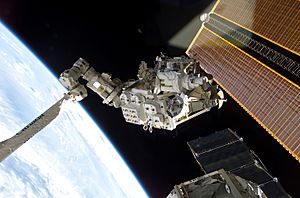
The Canadian Space Agency manages Canada's space program. Canada has given a lot of technology, knowledge, and people to global space efforts. This is especially true in its work with ESA and NASA.
Besides its astronauts and satellites, Canada is famous for its robotic arms. These include the Canadarm on the Space Shuttle and Canadarm2 on the International Space Station.
Canada's main contribution to the International Space Station is the Mobile Servicing System. This system cost $1.3 billion. It includes Canadarm2, Dextre (a smaller robotic hand), and the Mobile Base System. These parts work together to move things and help astronauts on the ISS.
These robotic arms use the Advanced Space Vision System. This system helps the arms see and work more precisely. Another Canadian invention is the Orbiter Boom Sensor System. This was an extension for the original Canadarm. It helped inspect the Space Shuttle's heat shield for damage in space. This boom was later modified for use on the ISS.
Canadian Astronauts
The CSA has looked for new astronauts four times.
- The first group, chosen in 1983, included Roberta Bondar, Marc Garneau, Robert Thirsk, Ken Money, Bjarni Tryggvason, and Steve MacLean.
- In 1992, Chris Hadfield, Julie Payette, Dafydd Williams, and Michael McKay were selected.
- In 2009, Jeremy Hansen and David Saint-Jacques joined the team.
- The latest group, chosen in 2017, includes Joshua Kutryk and Jennifer Sidey.
Nine Canadians have flown on 17 space missions. Most were on NASA Space Shuttle missions. Three were on Russian Soyuz missions. Two Canadian astronauts, Michael McKay and Ken Money, never flew in space.
| Name | Launch Vehicle |
Mission | Launch date | Notes |
|---|---|---|---|---|
| Marc Garneau | Challenger | STS-41-G | October 5, 1984 | First Canadian in space |
| Roberta Bondar | Discovery | STS-42 | January 22, 1992 | First Canadian woman in space |
| Steven MacLean | Columbia | STS-52 | October 22, 1992 | |
| Chris Hadfield | Atlantis | STS-74 | November 12, 1995 | Only Canadian to visit Mir space station |
| Marc Garneau | Endeavour | STS-77 | May 19, 1996 | First Canadian to fly to space more than once |
| Robert Thirsk | Columbia | STS-78 | June 20, 1996 | |
| Bjarni Tryggvason | Discovery | STS-85 | August 7, 1997 | |
| Dafydd Williams | Columbia | STS-90 | April 17, 1998 | |
| Julie Payette | Discovery | STS-96 | May 27, 1999 | First Canadian to visit the International Space Station |
| Marc Garneau | Endeavour | STS-97 | November 30, 2000 | ISS mission. Third visit to space |
| Chris Hadfield | Endeavour | STS-100 | April 19, 2001 | ISS mission. Second visit to space. First spacewalk by a Canadian |
| Steven MacLean | Atlantis | STS-115 | September 9, 2006 | ISS mission. Second visit to space; spacewalk |
| Dafydd Williams | Endeavour | STS-118 | August 27, 2007 | ISS mission. Second visit to space; spacewalk |
| Robert Thirsk | Soyuz-FG | Soyuz TMA-15 | May 27, 2009 | ISS Expedition 20 and Expedition 21. Second visit to space. First Canadian to fly on a Russian rocket. First Canadian on a long-term ISS crew. First time two Canadians were in space at the same time (with Payette) |
| Julie Payette | Endeavour | STS-127 | July 15, 2009 | ISS mission. First Canadian woman to fly to space more than once. First time two Canadians were in space at the same time (with Thirsk). Last Canadian to fly on a US Space Shuttle. |
| Chris Hadfield | Soyuz-FG | Soyuz TMA-07M | December 19, 2012 | ISS Expedition 34 and Expedition 35. Third visit to space. First Canadian to command a spacecraft and a long-term ISS crew. |
| David Saint-Jacques | Soyuz-FG | Soyuz MS-11 | December 3, 2018 | ISS Expedition 58 and Expedition 59. |
In December 2012, Canadian astronaut Chris Hadfield launched to the International Space Station. In June 2015, the Canadian government promised to keep supporting the International Space Station. This secured flights for Canada's remaining active astronauts.
In May 2016, the CSA announced that David Saint-Jacques would fly to the International Space Station in November 2018 for six months. He was part of the Expedition 58/59 crew.
A Canadian astronaut will also be part of the Artemis 2 mission. This mission will fly around the Moon. This will be the first time a Canadian travels beyond low Earth orbit. This is part of an agreement between the United States and Canada from 2020.
Canadian Satellites
Canada has launched many satellites for different purposes.
| Name | Launched | Retired | Purpose |
|---|---|---|---|
| Alouette 1 | September 29, 1962 | 1972 | Studying the Ionosphere |
| Alouette 2 | November 29, 1965 | August 1, 1975 | Studying the Ionosphere |
| ISIS 1 | January 30, 1969 | 1990 | Studying the Ionosphere |
| ISIS 2 | April 1, 1971 | 1990 | Studying the Ionosphere |
| Hermes | January 17, 1976 | November, 1979 | Experimental communications satellite |
| RADARSAT-1 | November 4, 1995 | March 29, 2013 | Commercial Earth observation satellite |
| MOST | June 30, 2003 | March, 2019 | Space telescope |
| SCISAT-1 | August 12, 2003 | In service | Earth observation satellite (studying Earth's atmosphere) |
| RADARSAT-2 | December 14, 2007 | In service | Commercial Earth observation satellite |
| NEOSSat | February 25, 2013 | In service | Monitoring near-Earth objects (asteroids, comets) |
| Sapphire | February 25, 2013 | In service | Military space surveillance |
| BRITE | February 25, 2013 | In service | Space telescope |
| CASSIOPE | September 29, 2013 | In service | Ionosphere research, experimental telecommunications |
| M3MSat | June 22, 2016 | In service | Communications satellite |
| RADARSAT Constellation | June 12, 2019 | In service | Commercial Earth observation satellite |
Other companies like Telesat have also launched satellites. These include the Anik and Nimiq satellites. Universities and aerospace companies in Canada also develop technology and research satellites.
International Space Projects
The CSA helps with many international space projects. These include satellites, rovers, and space telescopes. The CSA has provided parts for projects by ESA, NASA, ISRO, and JAXA.
For example, Canada contributed the Fine Guidance Sensor to NASA's James Webb Space Telescope. This sensor helps the telescope point very accurately.
| Name | Country | Primary Agency | Launch Date | Canadian contribution | Notes |
|---|---|---|---|---|---|
| UARS | United States | NASA | 1991 | Wind Imaging Interferometer (WINDII) | |
| Interbol | Russia | RSA | 1996 | Ultraviolet Auroral Imager(UVI) instrument | |
| Nozomi | Japan | ISAS | 1998 | Thermal Plasma Analyzer (TPA) instrument | Canada's first mission to another planet |
| FUSE | United States | NASA | 1999 | Fine Error Sensor | |
| Terra | United States | NASA | 1999 | MOPITT (Measurements of Pollution in The Troposphere) | |
| Odin | Sweden | SNSA | 2001 | OSIRIS (Optical Spectroscopic and Infrared Remote Imaging System) | |
| Envisat | Europe | ESA | 2002 | ESA collaboration | |
| CloudSat | United States | NASA | 2006 | Radar components | |
| THEMIS | United States | NASA | 2007 | Automated ground observatories | |
| Phoenix | United States | NASA | 2007 | Meteorological station | First Canadian part on Mars; confirmed snow on Mars |
| Herschel | Europe | ESA | 2009 | HIFI Local Oscillator Source Unit | |
| Planck | Europe | ESA | 2009 | ESA collaboration | |
| Proba-2 | Europe | ESA | 2009 | Fiber Sensor Demonstrator | |
| SMOS | Europe | ESA | 2009 | ESA collaboration | |
| Curiosity | United States | NASA | 2011 | APXS instrument | |
| Swarm | Europe | ESA | 2013 | Electric Field Instrument (EFI) | |
| Astrosat | India | ISRO | 2015 | Precision detectors for the twin UV and visible imaging telescopes (UVIT) | |
| Astro-H | Japan | JAXA | 2016 | Canadian Astro-H Metrology System (CAMS) | Contact lost March 26, 2016 |
| OSIRIS-REx | United States | NASA | 2016 | OSIRIS-REx Laser Altimeter (OLA) | First Canadian part on a sample return mission |
| JWST | United States | NASA | 2021 | Fine Guidance Sensor/Near Infrared Imager and Slitless Spectrograph (FGS/NIRISS) | |
| SWOT | United States | NASA | 2022 | Extended interaction klystrons (EIKs) for the radar. |
CSA Facilities
- John H. Chapman Space Centre – Longueuil, Quebec (main headquarters)
- David Florida Laboratory – Ottawa, Ontario (tests satellites)
- Canadian Space Agency Building – Innovation Place Research Park – Saskatoon, Saskatchewan
Canada has used several places to launch rockets and satellites:
Launch Sites in Canada
- Churchill Rocket Research Range / SpacePort Canada, Manitoba
Launch Sites in the United States
- Cape Canaveral Space Force Station, Florida
- Kennedy Space Center, Florida
- Vandenberg Space Force Base, California
- Wallops Flight Facility, Virginia
Other International Launch Sites
- Satish Dhawan Space Centre, India
- Baikonur Cosmodrome, Kazakhstan
- Dombarovsky Air Base, Russia
- Plesetsk Cosmodrome, Russia
Future Space Plans
After the successful launch of Radarsat-2 in December 2007 and finishing its work on the International Space Station in early 2008, the CSA looked for new big projects.
In November 2008, the CSA signed a contract to start designing the RADARSAT Constellation mission. This mission uses three satellites to observe Earth. These satellites were launched on June 12, 2019. The CSA also received money in 2009 to design robotic rovers for the Moon and Mars.
On February 28, 2019, Canadian Prime Minister Justin Trudeau announced Canada's commitment to the Lunar Gateway. This is a NASA-led project to build a small space station orbiting the Moon. Canada was the first international partner to join. As part of this, Canada promised to spend $2.05 billion over 24 years to develop the next generation of Canadarm, called Canadarm 3. This is Canada's largest financial commitment to a single space project ever.
The CSA is also developing a small lunar rover as part of the Artemis program. This robotic rover is being built with NASA. It will explore a polar region of the Moon and be able to survive the cold lunar night. The mission will carry at least two science instruments and is planned to launch by 2026.
Rockets and Launching
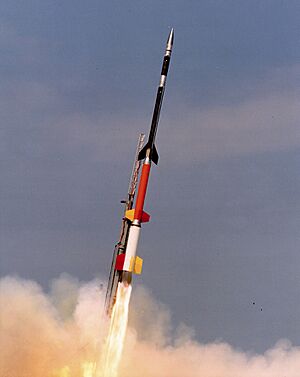
The Canadian Space Agency does not have its own rockets to launch spacecraft into orbit. Canada relies on other countries like the U.S., India, and Russia to launch its satellites. However, both the Defence Department and the CSA are looking into building a Canadian-made rocket.
In 2011, the CSA announced it was looking for places in Cape Breton, Nova Scotia, or possibly reopening the Churchill Rocket Research Range in Manitoba. These sites could be used to launch small satellites (150 kg). This would help Canada rely less on other countries for launches. Building a small satellite launcher could take 10 to 12 years. No funding has been announced for these projects yet.
A new launch facility is being built in Canso, Nova Scotia. It is expected to be ready in 2024–2025. This facility is for commercial launches of the Ukrainian Cyclone-4M rocket. The CSA has not announced any involvement with this project.
See also
- List of government space agencies
- Science and technology in Canada
- International Astronautical Federation
- Timeline of space travel by nationality


